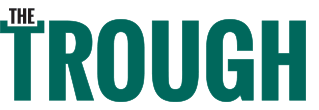
If you grew up with siblings, you have probably had the experience of each of you trying to blame one another for some sort of unfortunate incident – a shattered window, a melted G.I. Joe, maybe even a goose egg on someone’s head. In this circus of back-and-forth blame, the diametrically opposed perspectives take on lives of their own. Suddenly, not only is one party entirely to blame, but the other party is also completely innocent – a voice for unambiguous good.
As an adult, you learn that the truth often lies somewhere in the messy middle. Yet, the same dynamic plays out in animal agriculture. On one hand, you have activists who view the industry as one of the most (if not the most) significant contributors to greenhouse gas emissions and climate change. As such, they unfairly characterize livestock producers as callous, uncaring and ambivalent about the climate and animals. This obviously untrue generalization can lead to a feeling of defensiveness from producers.
Again, we must look to the messy middle. That was one of the conclusions with my talk with Virginia Tech’s Robin White following her presentation at the Animal Nutrition Conference of Canada (ANCC) this past May in Montreal. Dr. White’s session was, on the surface, about strategies for reducing emissions at a farm level through feed strategies. While it did touch on solutions, such as using AI and mixed modelling to create more precision feeding, it was also an in-depth exploration about the complicated distinctions between “right,” “wrong,” “good” and “bad.”
Consumer demands for meat alternatives generally don’t result in a direct decrease in production, because producers then turn to export markets. A world without animal agriculture is all but a fantasy. But White adds that the industry also needs to continue to accept that there are proactive measures it can take to reduce its climate impact – and the good news is, those measures often increase animal health and welfare.
You can read more about my chat with White and other speakers at ANCC on page 17. Other potential feed-level solutions are covered in our innovation feature (page 12) and our animal health feature (page 14). Our business feature (page 10) shows the real-world consequences of divisiveness in agriculture, while our farm focus (page 8) highlights promising young farmers with new ways of thinking.
It’s doubtful we will ever agree on everything – and some debate is healthy. But the more we all come to the table in good faith with knowledge and openness, the better a world (and industry) we create.
Print this page